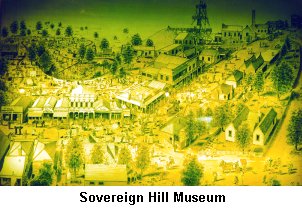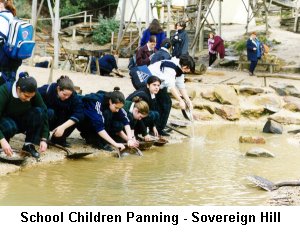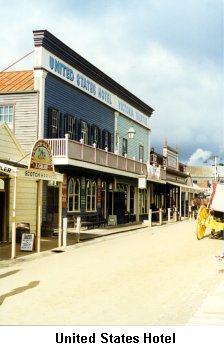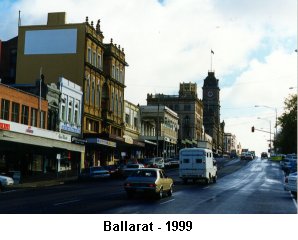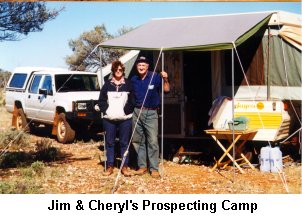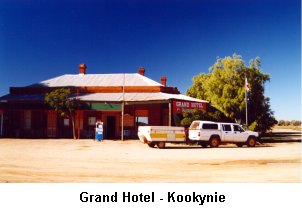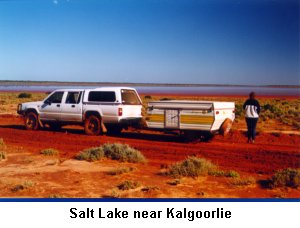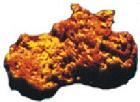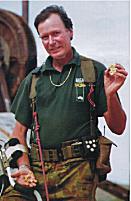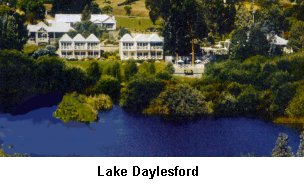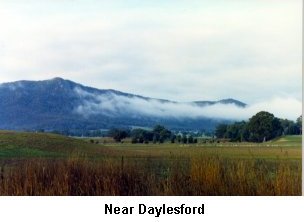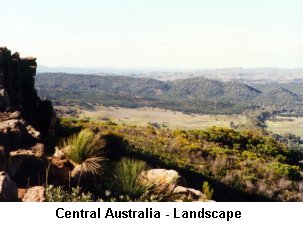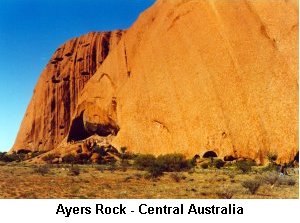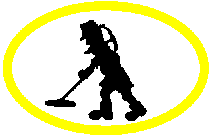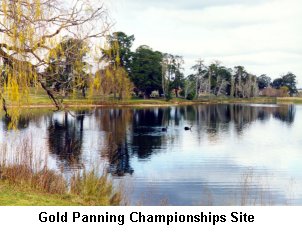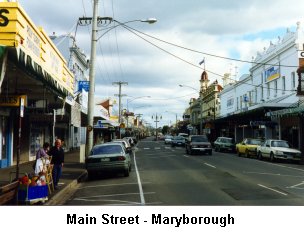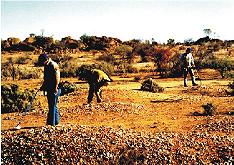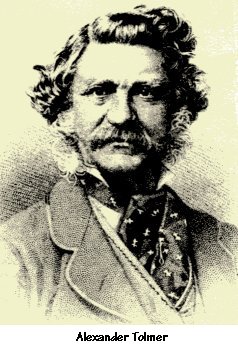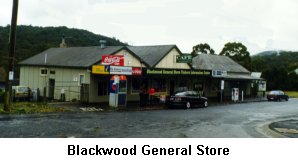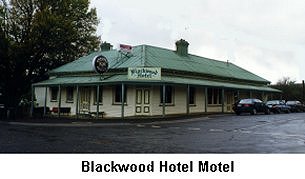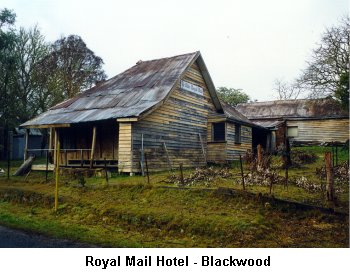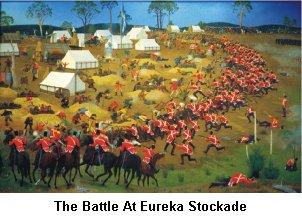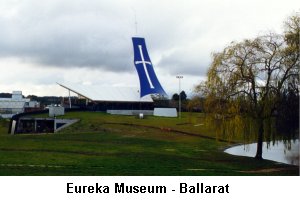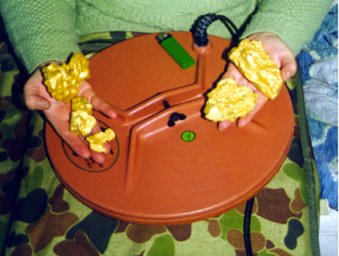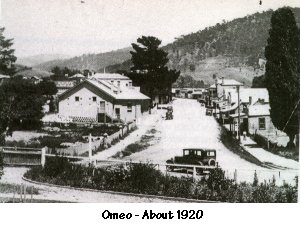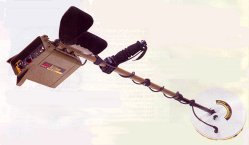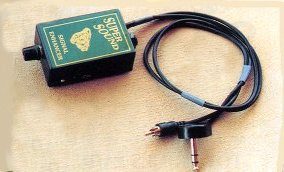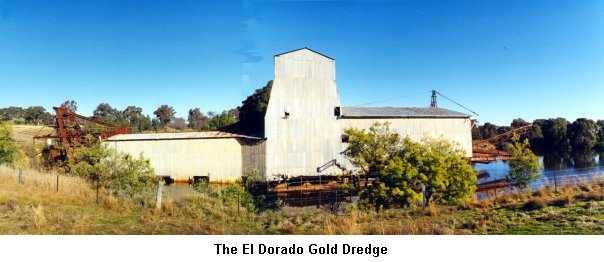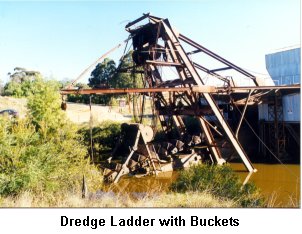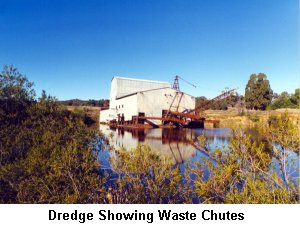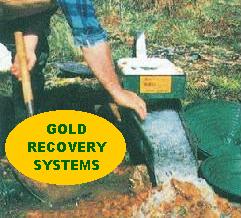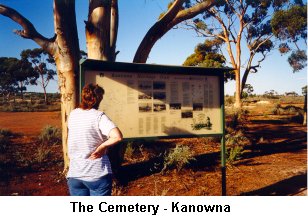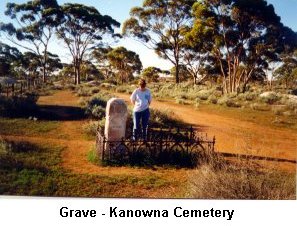
| July 1999 | |||||||||||||||||||||||||||||||||||||||||||||
|
|||||||||||||||||||||||||||||||||||||||||||||
Contents
|
|||||||||||||||||||||||||||||||||||||||||||||
| 1. EDITORIAL The price of gold on the world market continues to disappoint. Why the gold price remains low is open to conjecture, however here at Gold Net we believe that the rate is well below real value and will shortly lift rapidly to previous levels, and may even exceed those levels. This is of course dependent on governments retaining their gold reserves and not selling them off and we have seen some governments do recently. This action can only continue to depreciate the value of gold world wide. With annual world production of gold being in the vicinity of 1,000 tons while demand is 2,000 tons the present low price presently being offered is essentially unsustainable, with the short fall being filled by gold reserves. We can confidently predict a return to previous world levels in the near future. Next month we begin a series relating to the history of the Chinese on the Australian gold fields. The contribution of these industrious people to the getting of gold in the early gold fields was considerable. It is now well recognized, nurtured and fostered by historical and tourist organizations throughout Australian. How they came to Australia and the way they behaved is a revealing and fascinating saga, that we are proud to bring you. Editor Email: [email protected] All material in this magazine is copyright and may not be reproduced in any part or form whatsoever without written permission from the publisher.
|
|||||||||||||||||||||||||||||||||||||||||||||
|
2. SOVEREIGN HILL - BALLARAT by Tom Ferguson A visit to Ballarat in Central Victoria is never complete without spending a day at Sovereign Hill Museum. To visit this museum is a unique experience and one that should not be missed. With an emphasis on an interactive theme, the visitor is uniquely placed in the old gold mining community of Ballarat that has been built reflecting the first decade of the gold rush era, from about 1850.
Administered by The Sovereign Hill Museums Association, the community-based organization is structured as a company limited by guarantee. The Board is elected and all serve voluntarily. Professional staff administers the day to day operations and the organization presently employs 350 people. Over 550,000 people visit the museum each year. The facade of the museum appears as a simple entrance, but once inside the whole world appears to transform like you are transported back in a time machine150 years. A good proportion of the "inhabitants" of Olde Ballarat are dressed in period costume, and go about their business, just as they did 150 years ago. I always enjoy the lolly shop where purchases can be made. What a pity the prices are present day and not like they were in the past.
From this darkened area you step into a world that existed 150 years ago. The first impression is one of activity, action aplenty and with obvious things to do. Being interested in the gold getting side of the operations I always concentrate my attention to the old puddler, or the gold panning and the old mine, but there is a fascinating array of exhibits that cater for all. There is a fully operational puddler complete with heavy horse and attendant. Just a little way up the hill a fast running gold bearing stream where one can pan for gold and be rewarded for the effort. Sluices and an array of other memorabilia abound. Old windlasses and tent cities and a fine street or two displaying a number of stores, hotels, and including the Chinese Protector's Office, blacksmith, bank and gold office, to name just a handful. The Cobb & Co coach rattles around the streets with a team of four and stops at the office to collect fare-paying passengers. A restored Cobb & Co coach is used. The constables constantly harass the local diggers, requesting production of the gold licenses and arresting those that are unable to produce them and marching them off to the lock up. Woe betides anyone who interferes with this activity as the police display (in jest) the brutality of the period.
Ballarat has a reputation of being a cold and wet place, and on the day I visited in June it was mid winter and it lived up to its reputation. It rained on and off, but that didn't stop the bus loads of uniformed school children enjoying the museum, or the bus loads of overseas tourists moving excitedly from place to place, for Sovereign Hill is an exciting place to visit. The alluvial diggings evident near the entrance provide an insight into the individual or united privateers activities whereas at the top of the hill is a reconstruction of the Red Hill Mine. A company using deep mining techniques operated it. A huge mullock heap and large poppet head commanding the top of the hill are obvious beacons.
There is a lot to see and do at Sovereign Hill. A full day is hardly enough and a day or two could be spent there with ease. I can thoroughly recommend the experience and suggest that if you visit Ballarat, a visit to Sovereign Hill is a rewarding and unique experience.
|
|||||||||||||||||||||||||||||||||||||||||||||
by Jim Foster Arriving at the small gold mining town of Leonora we decided to spend the first couple of days in the Caravan Park. This was to give us time to get a look at the country and decide on a suitable campsite. While setting up the camper trailer we met two other couples from South Australia. Eric and Barbara Foulds and Eric and Lois Baxter. At first we didn't get their surnames so dubbed them Eric-the-hat and Eric-the-Beard for obvious reasons. It turned out to be a fortunate meeting. Joining up with the two couples we were able to share the experience of the Baxters who had spent the previous season in the Western Australian gold fields. Two days later we moved out onto the Specking Patch. Four miles east of Leonora this patch is famous for the gold it has produced over the years and continues to do so. Our first day there and Cheryl found three nice nuggets only a stones throw from camp. I followed with a nice 3 grammer from a depth of 10 inches then a 2 grammer from about eight inches. A few smaller nuggets turned up around camp but then our run of gold dried up. The Baxters then offered to take us onto a privately owned gold lease and working gold mine where they had permission to detect. NUGGETS BY THE HANDFUL The mine was a heap-leach operation where the ore is mined by the open-cut method. They were not interested in alluvial gold, but we were very interested. Right from the first day we found gold. From tiny nuggets up to nearly an ounce at a time the gold just kept coming. Digging a target that you know is gold is intensely exciting. Digging a target that you think is a bigger nugget is even more exciting. My biggest nugget to date was one of those where the signal was wide and soft yet with a definite hard center. Scraping the top layer of dirt away I again scanned the ground. The signal was still there but louder. Looking closely at the surrounding ground I concluded the ground had never been disturbed. It was a good chance that this was gold. I began to get excited. By the time I was down about six inches I was getting very excited. Calling Cheryl over to share the fun I began to speculate how big the nugget could be. The deeper I dug the more I was sure the nugget was going to be a good one. At about eighteen inches the target was out of the hole. Cheryl saw the nugget first and swooped on it like a hawk on a chicken. Cleaning the dirt off we estimated the nugget to be about an ounce, four hundred dollars worth of gold for ten minutes digging, not bad money and very exciting. Several more nuggets turned up around that area but none as big as the first one. Since that first deep nugget I have become addicted to digging deeper gold, it is an incredible thrill to unearth a nugget from where it has rested since time began and see it glow in the sun. WE MOVE ONTO THE MINE SITE At this point Eric and Barabara Foulds were asked by the mine manager if they would caretake the mine for a couple of weeks while it was closed down. They could have full use of the mine facilities for the time they were there which included food and fuel. We moved in to keep them company. At this point the Baxters moved off to meet other friends and accompany them to another spot. The very next day we began finding gold only a few yards from the mine office. This was taking it too easy. Just stroll down the slope and withdraw a few more nuggets from the bank. Morning tea? Just stroll back up and wash the nuggets as we washed our hands. We were in nugget heaven. Over the next two weeks we used the mine as a base and prospected country near and f ar. Every trip we brought gold home. Some trips were only a kilometre or so away down beside the airstrip, others were no more than ten kilometres away. Finally the mine was going back into production and we had to move out. Eric and Barbara had a map to a mine down near Kalgoorlie. Would we like to accompany them? Too right we would! They wanted to take the back roads down through the pastoral stations to have a look at the country. That was alright with us. The first night saw us camped at a mining site called Tampa. Here I found one small nugget. We decided to camp another night and give the country a good going over but unfortunately found no more gold. Driving south we passed through the old ghost town of Kookynie and onto Yarrie, a deserted mining camp. At Ednajina we paused for lunch amongst some old diggings. By late afternoon we were at Pinjin Station. Pinjin is run by Aborigines, they gave us permission to camp and directed us to a beautiful campsite between two hills. In the late afternoon the view from the hill top was superb. RAINED IN To our consternation it began to rain just after sunup next morning. Rain on these roads, which are mostly clay, means no driving until they have dried out. We were rained in. This meant at least another night. It rained nearly all day but up on our rise we were safe from f looding. ON THE ROAD AGAIN Early the next morning we were packed and ready to go. For the first few miles we managed pretty well. It was muddy in places but passable, then we came to the salt lake. A mile and a half wide at this point we found the road a churned up mess of mud and clay knee deep in places. Out in the middle we could see a car that had been abandoned during the night. Slipping and sliding we ploughed on. About halfway we found a bit of higher ground and stopped to watch the Foulds come through.
DISAPPOINTMENT We looked all that day but the landmarks on the map were not right. We never did find that mine. Eventually the Foulds headed for home. We were sad to see them go as they had been terrific company and great camp mates. At this point we were lucky enough to meet up with our friend, Brian from Kalgoorlie and get on the gold again. Four nuggets over two days for us and five for Brian made us alI happy. We spent two days in Kal (Kalgoorlie) then headed back for the Mine near Leonora. Welcomed by the manager and his wife with an invitation for tea, we found a campsite and settled in for the next two weeks. More gold nuggets and gold-in-quartz specimens, all from where we missed them the first time. We move again to another good gold patch. NEXT MONTH More gold nuggets and gold-in-quartz specimens, all from where we missed them the first time. We move again to another good gold patch.
by Ken Kirkham Just who discovered gold at Daylesford is a hotly contested issue that even today historians argue about. Just who was the first to discover gold here is perhaps lost in the historical maze of the uncertainty and fast moving events of the era. Never the less it is clear that by August 1851 gold was being dug by John Egan who had a pastoral run in the area. There is also a claim that there were diggers at Wombat Flat some weeks before October 1851. Mr. F.Kawerau, Esq., attested to this at the gold reward hearings. Wombat Flat was not an outstanding success, and greater yields were achieved at Sailor's and Spring Creek's. There were some enterprising characters at the time, with leaseholders of the land charging from 50 - 100 pounds as a fee to dig on the pastoral lease. W.E. Stanbridge made quite a tidy sum from the rents charged in every paddock of his property. John Egan also obtained rents from miners and he confidently predicted that the gold would outlast his lifetime - which it did.
The recoverable gold here in fact turned out to be considerable and was distributed across a wide area in almost every gully and creek. There were some quite interesting names concocted by the early diggers. From near Connell's Gully to the Nuggetty Ajax areas, and west to Tipperary Point just some of the more prominent names are: Don't Wake em Gully, Keep it Dark Gully, Brandy Hot Gully, and Bottle O' Porter Gully, Shicer's Gully, and Woman's Gully. There were a number of others whose local names have been lost to antiquity. It points out however that gold was prolific throughout the Daylesford area and it continued along the creeks for about 15 miles north. On the western edge of Deep Creek there were a series of deep tunnels that followed the alluvial runs underground. The longest being the Italians ran at 2,500 feet, and the Ballarat run of 2,800 feet. There were a number of lessor tunnels as well. The rush to Daylesford was more like a "slow boat the china", with a gradual but obvious build up of diggers, right throughout the region. It was reported that well into 1852, almost a year after gold had been found, there was only two to three hundred diggers at Daylesford. With the gold bearing area of the region being some 300 square miles perhaps the authorities 'missed' some of the diggers. It was indeed; Victoria's most diversified and prosperous area for gold. The Daylesford area attracted diggers from all over the world. They came from Switzerland, Italy, Germany, Denmark, Austria, Ireland, the Slavic States, and from the United States. And of course, late in the 1850's came the Chinese, who mainly worked the tailings for their wealth. Many of these world travellers in fact remained and settled permanently in the area. Perhaps there was some truth that most of these immigrants were escaping wars in their own countries. In 1855 and 1856, the number of diggers increased sharply, as other gold areas declined. Early in 1855 about 5,000 diggers rushed the Yandoit area. On the north west side of the slopes here large nuggets were the rule rather than the exception. Nuggets of 750oz. 600 oz. 300 oz. 240 oz. and 50 oz. were recovered. Daylesford continued to give up copious quantities of gold from a broad area of shallow diggings. It took two years after gold was discovered before a gold Commissioner arrived in April 1853. From 1870 many of the alluvial diggings had given up their gold and deeper quartz mining in the area was considered. Some of these quartz mines were fabulously rich. The Royal Oak Company was returning about 32 oz. for each foot of progress achieved and from one lead over 250,000 oz. was recovered. Another mine called The Exchequer, for obvious reasons, recovered about 200 oz. per week at a depth of 120 feet, from gold bearing ground that was 30-100 feet wide and up to 6 feet deep. Ironically the area also produced diamonds, sapphires, zircons, which were not recognized as being valuable and were for a time discarded. Some of these stones may still be found in the area. The entire area in and around Daylesford is a labyrinth of tunnels and diggings criss-crossing the landscape.
Some historical data is of significance, in that in 1859 the official number of miners at Daylesford was recorded as follows. European miners 2,763. Chinese 926. Of these 950 Europeans were tunnelling, 780 were alluvial sinking, 780 were alluvial sinking, plus 250 Chinese alluvial sinking and 35 tunnelling. There were 4 steam quartz crushers. With 106 horse puddling machines, 3 steam pumps and 5 water worked pumps. A large number of company operations operated from the middle 1860's onwards with in general marked success. One such operation was recovering up to 30 oz to the ton, for weeks on end. Of course many of the deep mines struck the usual problem with water and many a deep mine was abandoned because of water seepage and flooding, especially during the winter months while they was still producing particularly well. Good gold still lies hidden under water filled mines in this region even today. Another problem was the miner's disease Phthisis. This was caused by dust from the drilling being breathed into the lungs. Many a good miner died before reaching the age of 40 in these circumstances, and this problem continued into the early 20th century. A great deal of enterprising entrepreneurs existed in the Daylesford area and a number of companies produced and either sold or rented water races bringing much needed water from creeks. At least 300 miles of such races existed in this area, and were usually rented out at about 3 pounds per week by the owners after being installed on creeks. Today, Daylesford is a shadow of its former self. It is a delightful historic township with a grand golden past. To take a leisurely stroll down the main street and drink in the history of the town is a rewarding experience. To visit the old shops so well preserved and well kept is a credit to the present townsfolk. Perhaps in the future Daylesford will again give up more of its golden wealth.
|
|||||||||||||||||||||||||||||||||||||||||||||
|
|||||||||||||||||||||||||||||||||||||||||||||
|
|||||||||||||||||||||||||||||||||||||||||||||
|
|||||||||||||||||||||||||||||||||||||||||||||
|
5. THE LEGEND OF LASSETER - Part 5 Craig Wilson Taylor's trip to Ayers Rock started in dramatic circumstances. The rain had been incessant, and the rivers and creeks that were usually dry were in flood. The ground was saturated and the going that first day proved impossible. Only seven miles in a day, and both men were exhausted. Some of the camels had broken away and stores had been lost. Taylor returned to Alice springs, regrouped and started out again. Coote set out for Hermannsburg Mission in the aircraft. It was about 80 miles west of Alice Springs. This Lutheran Mission had been established for some years, and was a prominent landmark in the area. Serving a large indigenous population, Coote was made most welcome and he enjoyed the sophisticated atmosphere with the Superintendent and his wife. His intention was to fly over the area to the west in an attempt to locate Lasseter or his tracks. He circled Ilbilba and many other prominent landmarks without sighting Lasseter. Returning to Alice Springs he made preparations to fly to Ayers Rock, with the intention of linking up with Taylor as soon as possible. Taylor on the other hand was in deep trouble. The ground was still saturated and the going excruciatingly slow. Time was getting away, and he realized he was not going to be at Ayers Rock before Coote with the plane. He pushed himself and the camels to their limits.
There was no sign of Taylor. Coote reconnoitered the area carefully and considered his options. All the food he had, was given to him at the mission and water was very limited indeed. Roping the plane down, he decided to remain in the vicinity. Six days were to pass. Hunger was with him constantly now and the cold nights were playing havoc, as his clothing was totally inadequate. With his last pint of water in hand, Coote walked towards the rock. That night he saw fires close to the rock and fearing unfriendly natives withdrew a safe distance. In the morning he walked towards the fires, and found to his surprise that there was a white man there. It was Taylor. Both men were delighted, and Coote gorged himself replenishing his body with sustenance. Taylor repaired the damaged propeller with metal cut from petrol tins. Balancing the weight by guesswork, his expertise displayed with articulate ease. The vibrations were minimal and certainly sufficient to allow the aircraft a relatively trouble free flight back to Alice Springs. As Coote landed back in Alice Springs he was astounded to learn that there was nationwide concern for him, and that ground parties had set out from Hermannsburg Mission in search of him. A squadron of Defence planes had been despatched from Melbourne that day, and were en route to Alice Springs. Taylor with his native Jacky, set about clearing a landing strip at Ayers Rock. Under the shadow of this great natural phenomena, it was awe inspiring to gaze at its greatness. Rising out of the desert, this great monolith, a mile across, 2 miles long, and 1,000 feet high was then and still is today, one of God's great treasures on this earth.
With the assistance of his aboriginal Jacky, he made Tempe Downs, but was in such a state, he took some time to recover. He moved on to Hermannsburg Mission and wired Alice Springs, telling Coote to fly to Hermannsburg. Coote had returned to Sydney. Taylor returned to Alice Springs, and received fresh instructions from the directors to refit, engage Johns, and with camels make for Ilbilba where they were to re-establish a base and then try and locate Lasseter. A new plane was enroute piloted by Captain Pittendrigh and a mining engineer called Hamre. Taylor and Johns set off for Ilbilba via Hermannsburg Mission. About a fortnight later they arrived at Ilbilba, and re-established the camp. Information about Lasseter from the indigenous natives was sought without result. Neither had they heard or seen the "big bird" that they were expecting. While these events were unfolding to the east, Lasseter was nearing his goal. Moving through this wild and forbidding country was fraught with danger. A white man alone here would be easy pickings for not so friendly natives. At times natives would appear near Lasseter, silently rising from the low cover, walking along with him for some time. Hoping to lure him away from water holes. He was aware of this ruse, from his previous experience with Johns. Further west the spirals of smoke that warned others of his approach diminished, and eventually stopped. Was he alone. He thought not. His thoughts were correct as one morning he awoke to find footprints throughout the camp. From that time on, he disguised his sleeping position. At last he arrived at his reef. Tethering his camels he drank in the wonder of where he was. At last, he was with his fabulous Eldorada. Touching the quartz and gently rubbing the dull yellow colour encased within, he smiled and dreamt of the fabulous wealth that this would bring him and others. He had achieved his lifelong ambition.
Pegging his claim, his thoughts turned to the return to civilization. His intention was to go to Lake Christopher and wait for the ground parties he knew would be looking for him. He set off in great spirit, late in the afternoon.
Camels laden with specimens, but low on water, he knew he must water them within a day. As he stopped towards evening, the camels were brought to their knees to assist unloading. As he walked away laden with stores the camels' rose quickly to their feet and gathering momentum broke free and raced off, Lasseter chasing after them. All his water was still on the camels' backs. Alone in the desert without water, death would come quickly.
|
|||||||||||||||||||||||||||||||||||||||||||||
|
|||||||||||||||||||||||||||||||||||||||||||||
|
6. THE 7th AUSTRALASIAN GOLD PANNING CHAMPIONSHIPS Sue "Goldie" Reynolds Tucked away in the Pyranees Mountains, about 100 miles north west of Melbourne, Victoria, lies the old gold town of Maryborough. It is here that this year the 7th Australasian Goldpanning Championship will be held on Saturday 23rd and Sunday 24th October 1999. The event is traditionally a fun weekend when people from all over Australia and in fact the world come to enjoy the camaraderie of the thrill of the golden chase. On Saturday contestants are encouraged to practice with almost the whole day set aside for the sharpening of goldpanning skills. A number of experienced people will be on hand to show and encourage those who would like to "have a go".
Minelab have provided substantial support for this event in the past, and in donating a Minelab 2200D metal detector, which is truly a much sought after prestigious prize, their continued commitment is appreciated by all. Take a look at their web site at www.minelab.com.au On Sunday the serious business of goldpanning gets under way. The following category of events are listed as follows.
Entry fees: Adult Event: $15.00 Children's of Youth's event: $7.50 Team: $15.00 Discounts apply for early registration.
The site for the Gold Panning Event is right in the heart of Maryborough at the Caravan Park, which is situated on a picturesque lake just east of the main shopping centre. Accommodation is available in the town and there are a number of caravan parks, hotels and motels in the area. The major centres of Ballarat and Bendigo are within one hour's travel on good roads, and excellent accommodation and supplementary services are available. Overseas visitors are well catered for, and will be made most welcome.
Further information can be obtained by contacting the organizing committee by E-mailing either of the following. [email protected] (Fred Olsson) [email protected] (David Watters) Gold Net will be there - and we will hope to see you there too.
|
|||||||||||||||||||||||||||||||||||||||||||||
|
|||||||||||||||||||||||||||||||||||||||||||||
|
|||||||||||||||||||||||||||||||||||||||||||||
|
7. THE CITY THAT WENT BROKE by Leon Hawkins In 1851, Adelaide, the capital of the colony of South Australia was almost a ghost town. An estimated 20,000 men, most of the male population, had been lured over the border to the booming Victorian Golfields. Everywhere shops were empty, their windows boarded up. Brief signs were often seen hastily tacked to doors "Gone to the diggings," said it all. Thousands of families had no money to spend, as there was no safe way for the South Australian diggers to get their gold or their money back home. Bushrangers roamed the dusty bushland tracks and few escaped their depredations. One pair of successful Adelaide diggers did manage to smuggle their wealth home by clever subterfuge. Converting their gold to gold coins they bought a strong dray and horse. Then, borrowing a blacksmith's auger drilled holes into the heavy timbers. Packing hundreds of gold coins into each hole they hid their fortune then stopped the holes with wooden plugs. Inevitably they were bailed up by bushrangers who upon finding the two only had seven pounds and ten shillings in cash on them to get back all the way to Adelaide took only the five-pound note, kind heartedly leaving them some money to get home with. But kindhearted bushrangers were rare. In desperation a plan was conceived to bring back to Adelaide some of the gold found by South Australian diggers. On the tenth of February, 1852 Police Commissioner Alexander Tolmer left Adelaide to establish a mounted police escort from Victoria's central goldfields.
On the 5th of March Tolmer and his armed party left for home carrying 5199 ounces of gold valued at eighteen thousand four hundred and fifty six pounds. It was a slow journey through hostile country. While their party was too large and heavily armed for any bushranger to challenge there were many other perils. It was mid-summer and water was scarce. Large parties of natives roamed this area and could not be relied upon to be friendly. At last they made it to the Murray River and the punt crossing at Wellington. From there it was through safe country home. This first of eighteen successful escorts saved the infant colony from bankruptcy. It also pioneered the most direct route from Victoria to South Australia and also carried the overland mail. Over the time of the eighteen trips the escort carried a total of 328502 ounces or about 12 tons of gold, worth at that time one million one hundred and eighty two thousand pounds. Because of the shortage of coinage in South Australia the government began minting gold coins from some of the gold it had bought from the diggers. But this practice ceased when a shipload of coinage arrived from England. Most of the gold Adelaide Pound coins that had been minted were bought back by the government and melted down. But some of these historic coins survived and today are keenly sought after by coin collectors around the world. An Adelaide pound gold coin in good condition is worth tens of thousands of dollars today. Thanks to the vision and bravery of Alexander Tolmer and his men the city of Adelaide was saved in the nick of time from bankruptcy. Before Tolmer arrived back with the first gold discussions had been going on about abandoning the colony. Had he failed it was almost certain this decision would have been implemented. Today the South Australian Gold Escort track can be traced most of its length. Some of it is now the busy Western Highway that links Melbourne and Adelaide. Memorial cairns can be found at watering points and campsites where the escort halted. Through the two deserts the escort crossed the actual track can still be followed as it meanders through the low scrub. With the help of local historical groups it is possible to walk parts of this historic track and wonder about the vision and bravery of the men who saved a city from bankruptcy.
|
|||||||||||||||||||||||||||||||||||||||||||||
|
|||||||||||||||||||||||||||||||||||||||||||||
8. FLECKS ! - Glints from here and there
|
|||||||||||||||||||||||||||||||||||||||||||||
|
|||||||||||||||||||||||||||||||||||||||||||||
|
9. BLACKWOOD - HEART & SOUL by Glenn Redman It was a coolish June morning in Melbourne when I awoke and surveyed the weather outside, for today was the day I was going to Blackwood, just a little north west of Melbourne to search for gold. I had previously read a little of Blackwood and knew that about 20 tons of gold had been extracted from this relatively small area. Most gold came from sluicing operations, some from mines, and a fair proportion from alluvial diggings. I intended to seek the gold that the miners left behind in alluvial diggings and had packed the trusty metal detector. I had not been there before and although I knew it was heavily timbered and rather steep, as it turned out I was totally unprepared for the way the day unfolded. My off-sider, the ever dutiful and loving wife Pat, always accompanied me when I ventured close enough to Melbourne for her to enjoy the day, and as Blackwood was only about an hour from home we set off with great expectations a little before 9am. It was a fine and sunny day when we left, but climbing into the steep country the weather turned decidedly worse and we found ourselves in a drizzling overcast and rather cold and wet situation. I knew what Pat was thinking as she glanced at me occasionally with that "I told you so" look as I travelled on towards Blackwood. As we approached I was looking for the tell tale signs of old diggings but none were evident from the main road. Reaching the outskirts of Blackwood I slowed and turning off to a side road to go into the town proper. I noted that the buildings were all relatively old, well aged but were very well kept. There was an old stamper just near the old pub (hotel), and the hotel's front door declared that this was the Cobb & Co booking office. Opposite the pub there was a general store, decidedly a building of some historical stature with a tourist information sign prominently erected outside. Here then I thought, was an opportunity to gain the local information on gold that I lacked. Entering the store through a low door, the bare floorboards creaked with their age under the strain of my frame, and while the proprietor was carefully placing the mail in the appropriate boxes I approached the counter. I noted the tourist information on a nearby rack on its own away from the general products displayed at the store and to my amazement I noted a state of the art computer which was clearly attached to the internet. I did not expect to see such modern technology in such a small rural community. It brought to my attention my pre-conceived ideas relating to the occupant of this small country business was sadly astray.
Duty called and Judith was eventually required to resume her post office duties. Pat and I took a closer look around this quaint community. I had the camera with me, and snapped a few photos of the local store, pub and the old Royal Mail Hotel. Now derelict, but sometime past a focal point for the Cobb & Co stage depot. We had intended buying a sandwich or pie for lunch but opted instead to take a closer look at the hotel, and we were glad we did.
Her house was a small cottage on a hillside in a cosy setting. The obligatory bark of a chained dog erupted as we approached and we were met at the door by a small lady, with an inviting smile and a welcoming demeanour. As I entered this charming cottage, the large fire radiated warmth that provided a disarming atmosphere. Photos of much loved family adorned the mantle piece, framed and proudly exhibited. We were made to feel welcome and as I asked about the history of the region and of gold in particular, Grace produced a large stack of thick books, which when opened contained an incredible history of Blackwood and its inhabitants. As I pored over these records mostly containing snippets and cuttings from the local paper the heart and soul of this place lay before me. I read intently as Pat asked a few questions. I was fascinated with what I was reading. The story of a grave in the local cemetery, with the simple inscription which simply reads, "Little Doaty's Grave". Little Doaty was the much-loved daughter of Joseph and Mary Rowan. She died of diphtheria aged 4 years in 1878. Her real name was Josephine, but legend has it that in her baby way she could not say Josie and would call herself Doaty, in her attempts to pronounce her name. When she died her parents were heartbroken, and her mother died shortly after of pneumonia in New Zealand. Little Doatys older brother carefully tended her grave until he too died and to this day his daughter still tends the grave with loving care. The story of a terrible storm that claimed 16 lives in one night including two American diggers, who were sleeping in two beds, three to a bed in line. In the fierce storm a large tree crashed through the dwelling killing instantly the two men in line on the outside position of each bed. The story of the deranged man who shot dead the local minister, who with a bible held in front of him tried to negotiate only to have a rifle levelled at him with the shot passing through the bible into the heart of the man of God. Tragically he died instantly and when the police were called the murderer was himself shot dead by police, when he refused to surrender. The Bible is still exhibited in the local store. I was so fascinated by these stories displaying the true heart and soul of this place, so dearly loved by those that live their lives in this pristine wilderness that I almost forgot what I was really seeking. It was hard to draw myself away from what I was reading and concentrate on the true nature of my purpose. I quickly read the gold history. The fact that this area had given up some 20 tons of gold, after gold was discovered by drovers, crossing a creek in 1854. That the majority of gold was got from sluicing operations in the Lerderderg River and its tributaries, which is now a proclaimed Historical River where panning is no longer permitted. That several large nuggets were found here up to 320 oz. Within 2 years the population of the town had swelled to over 13,000 and that the township today has only about 100 permanent residents. Within two years of the first rush three main reefs, Golden Point, Red Hill, and Simmons Reef were all small townships in their own right. Schools, Churches, a large assortment of shops, brothels and at least 12 hotels were thriving. Cobb & Co ran a daily coach service to Melbourne.
Time overtook us, and rather than impose on Grace any more, we moved to leave, but as we did so I was presented with a small printed book of poems, by this smiling lady, and resuming my seat glanced through the book. It contained a selection of poems that Grace had written herself, with great skill I might add. I began to read the first page and found myself riveted to the rhyming words as they flowed. Reminded of the time, I graciously thanked her for the gift and left a much wiser man. I am sure Grace would not mind me repeating a verse or two from this little treasured poem I found about Blackwood itself.
As we left that little township, through the tall forest towards Melbourne there was a silence that was not usual between Pat and I. We were both clearly reflecting on the day's events. After about half an hour Pat broke the ice and asked if I had enjoyed the day. I certainly had. I hadn't even got to the gold fields but that day was a lesson well learnt, a lesson that will stay with me for a long time. Blackwood, you are a treasure - keep your heart and soul.
|
|||||||||||||||||||||||||||||||||||||||||||||
|
|||||||||||||||||||||||||||||||||||||||||||||
|
WE BUY GOLD GOOD QUALITY NUGGETS REQUIRED TOP PRICES PAID Currently seeking half ounce nuggets and upwards. Gold nuggets sold on consignment 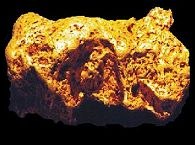
PO Box 258, TANUNDA. SA. 5352 Telephone: (08) 8563 0097 Mobile: 0417 848 910 E-mail: [email protected] |
|||||||||||||||||||||||||||||||||||||||||||||
|
|||||||||||||||||||||||||||||||||||||||||||||
|
10. BATTLE AT BALLARAT - Part 6 by Craig Wilson As the troops moved up the hill towards the Eureka Stockade, shots rang out. Lalor awoke with a start, and rising quickly moved to take control. His men were rousing and running to their posts. Confusion was everywhere. He turned his attention to the perimeter and saw the steady movement of red coats approaching in line, bayonets fixed. To his right mounted troops were emerging from the scrub and to his left more mounted troops awaiting atop a hill, in line, swords drawn.
At 100 yards Captain Christopher Wise leading his men up the hill screaming "Charge", was hit and fell, wounded. His men continued the attack. From both flanks mounted troops approached the stockade, completing the pincer movement. As the foot soldiers and cavalry entered the perimeter a fierce hand to hand struggle took place. The diggers were no match for trained infantry and cavalry. The scene soon degraded into a bloody massacre, that to this day still scars this country. Many defenseless men, severely wounded and lying helpless, were either bayonetted, shot, or hacked to death by sword wielding soldiers. The enthusiasm of the troops to continue the carnage was not curbed. Prisoners were taken, wounded rounded up, and as others moved in to assist the wounded, they were themselves attacked. A digger called Ashburner had hid Lalor, and after some time he heard the sound of voices above him. He lay still fearing it was the soldiers. In fact it was Father Smythe, the Catholic Priest with his Armenian, who had suffered so much at the hands of the troops previously. They took him to trusted friends near Mt. Warrenheip. Lalor knew that without medical help he would surely die. Returning to Father Smythe, a doctor was called and his left arm amputated. He needed care and was smuggled to safe houses and hidden by trusted friends in Ballarat. Over 160 prisoners had either been taken or rounded up after the battle. The politics of the aftermath began. Commissioner Rede reckoned that the 160 arrested were far too many. It was the ringleaders he was intent on prosecuting. The Americans were released following representations from prominent American businessmen from Melbourne. The Governor proclaimed Martial Law, and warrants were issued for the alleged ringleaders including Lalor. The outspoken editor of the "Ballarat Times", was arrested on a charge of seditious libel for supporting the diggers in articles previously published. Public meetings called in Melbourne designed to support the Government quickly displayed that the policies and actions at Ballarat were indeed deplored by the general populace. When General Nickle arrived at Ballarat, the diggers braced themselves for another onslaught. It did not come. Nickle was a veteran soldier and understood full well war, battles, and their aftermath. He walked unescorted among the diggers, talking to them and their families, diffusing the situation. Further meetings in Melbourne condemned the Governor and his administration for the manner in which the Ballarat matters had been handled. On General Nickle's recommendation the Martial Law proclamation was revoked three days after it was proclaimed. On Friday the 8th December 1854, 13 men were committed for trial at the Supreme Court in Melbourne charged with high treason. Under heavy guard they were transported in carts to Melbourne a few days later. Lalor underwent further surgery to remove a bullet from his side, and then under cover went to Geelong where his fiancée cared for him. Governor Hotham intended to make an example of the 13 charged men. It would be the gallows for them. He underestimated the will of the proletariat in their resolve to defend their fellow diggers, who had done nothing more than stand up to tyranny. In January 1855, a concerted campaign began to obtain an amnesty for the Eureka prisoners. A petition to the Governor made it bluntly clear that the disobedience only occurred in abject reaction to the corruption and immorality of the government regime that existed at Ballarat. Hotham rejected the petition.
On February 22nd 1855 the trials of the thirteen charged with high treason began, before the Chief Justice. They were on trial for their lives, and the matter was very serious indeed. John Josephs and John Manning were the first tried. They were found "Not Guilty", and to great rejoicing carried through the streets of Melbourne shoulder high. Governor Hotham was outraged. He decided to delay the other trials so public concern would diminish with time. He was decidedly wrong with his judgement and public meetings were held to decry this action. On the 19th March 1855, Timothy Hayes and Rafaello Carboni were tried. Before a jury of 12, Hayes was found "Not Guilty". Carboni's trial was laced with prosecution witnesses of dubious quality that perjured themselves but he too was found "Not Guilty". Both of them were carried through the streets of Melbourne shoulder high. All those charged were eventually set free. Governor Hotham's administration was in tatters. His tactics were attacked vigorously in the newspapers and he never recovered from this setback. Rewards posted for Lalor and others were withdrawn. The Gold Fields Commission published its finding, with most of the aims of the Ballarat Reform League accomplished. The license fee was reduced to one pound per annum. Title over a digger's claim would be granted, which would enable a vote. Diggers were to be elected to Local Courts and given greater freedom over their own affairs. When Peter Lalor recovered he was no longer a wanted man and returned to Ballarat and was re-united with his partner Tim Hayes. His friends provided him with a cheque for 1,000 pounds to enable him to marry and buy a farm. At the Eureka 22 lost their lives. Fourteen diggers and eight soldiers. The Eureka Stockade saga was finally coming to its conclusion.
The saga of the Eureka Stockade had reached its conclusion.
|
|||||||||||||||||||||||||||||||||||||||||||||
|
|||||||||||||||||||||||||||||||||||||||||||||
|
|||||||||||||||||||||||||||||||||||||||||||||
|
|||||||||||||||||||||||||||||||||||||||||||||
|
11. STRIKES Recent Finds
|
|||||||||||||||||||||||||||||||||||||||||||||
|
|||||||||||||||||||||||||||||||||||||||||||||
|
|||||||||||||||||||||||||||||||||||||||||||||
|
|||||||||||||||||||||||||||||||||||||||||||||
|
12. THE OMEO GOLD ROBBERY by Larry Lahey Among the gold fields there are always gold buyers. In the 1850's there were gold buyers, just like there are today. Cornelius Green was a prominent and well known buyer whose reputation for scrupulous honesty had earned him a reputation throughout the gold fields of Victoria. In fact he was so well known mounted troopers often escorted him on his journeys. It was January 1859, and the rather plump figure of Cornelius Green was at Livingstone Creek in Gippsland, Victoria, some 150 miles east of Melbourne. He had been successful with his purchasers and had procured about 800 ounces of gold from the diggers, and had begun the long journey back to Melbourne. He was accompanied by a mounted trooper and a Miss Mutter, who was his paramour. As there were no suitable lodgings at the diggings it was intended to make their way to a roadside Inn south of Swifts Creek for the night. As that rode toward the Inn they passed three men, one of whom was known to Miss Mutter, as a man named Chamberlain a local butcher. That evening the party enjoyed a hearty meal and slept well in the quality accommodation at the Inn. In the morning after a hearty breakfast the group resumed their journey accompanied by a Mr. Dickens, a local storekeeper, who had encouraged Green to buy gold from his store some two miles from the Inn. To reach the store they had to cross ground known locally as the Tongee Racecourse. It was a good flat piece of ground but thickly timbered. Green started off toward the store leading a packhorse, followed my Miss Mutter, and then the mounted trooper with Dickens further behind leading another pack animal. They had gone but a short distance, when from behind a large tree a man stepped out and raising a gun aimed it squarely at Green and fired. The gold buyer, caught by surprise took the full blast in his side and fell sideways onto Miss Mutters horse. At this the animal reared and being frightened bolted into the bush.
The constable's mount bolted towards the Tambo River and threw his rider into the water. Fortunately the wounded trooper was able to remount and rode towards Swift Creek. Miss Mutter's horse threw her into dense bush about 200 yards from the shooting. Regaining her feet, she looked back to see Green lying on his back, hands uplifted toward two men who were standing over him. She witnessed one of them point a pistol at Green and fire. His pleading posture quickly dissolving as his body became lifeless. Miss Mutter now traumatized, watched as one of the men hacked at the lifeless body with a tomahawk. At the sight of this butchery Mutter fled further from the scene into the thick scrub, and a short time later met up with Dickens. His wounds were substantial and together they made way to his store. As they neared the store, they came upon Greens horses. His mount and the pack horse together, amazingly still with all the gold still in the saddlebags. The trooper made his way back to the Inn and a rider was dispatched to the police camp at Livingstone Creek. By nightfall Police Inspector Hill and his entire contingent were at Livingstone Creek. With a group of local volunteers They made their way to the scene of the robbery and murder and there found the mutilated body of Cornelius Green. His head was riddled with slugs and his nose had been severed as the result of a tomahawk blow. A further tomahawk blow had left a gaping hold in his temple and one of his hands was almost severed. His clothes had been rifled and anything of value had been taken. Green's body was conveyed to Tangee and buried respectfully, the whole town turning out for the event. A lay preacher conducting the service in the absence of the local preacher. No inquest was held as the local magistrate was also absent at the time. The police lost no time in identifying the suspects, and it was soon learnt that the two men that were sought were the butcher, Chamberlain and a man named Armstrong. The police searched diligently for some time without success. The two murderer's had moved on to Gibbo Creek, and then to Toke's store some 3 miles further on, where Chamberlain visited the store and was befriended by Toke. Later that evening Toke visited their campsite and gained their confidence. They then related how they had murdered Green and had intended to murder Dickens, as he knew them. Chamberlain wrote a letter to his partner, which he gave to Toke to deliver. Toke however delivered it immediately into the hands of the police, and the net closed on the two felons. With the arrival of a police party at Toke's store, Toke and a black tracker joined the group, and the two men were tracked to Wheeler's Crossing. The police group camped silently for the night and at first light rode on in pursuit. After an hour and a half the police came upon their campfire still burning, with tracks leading away into the bush. One in the party knew a shortcut and taking this track cut off some three miles and when they rejoined the main direction the two groups caught sight of each other. The pursuit pace lifted to a gallop, and the two fleeing men rode into a boggy creek where Armstrong's horse became bogged dislodging the rider. Incredibly both men left their horses and taking a gun and a revolver with them, climbed towards a nearby hill. The bush was very thick and the police party formed a broad line and moved forward up the hill. The black tracker was hot on their trail when he suddenly stopped and looking up a tree pointed out the two men perched aloft. All the police were called in by using a "coo-ey" call, and the tree approached cautiously. Neither man made any attempt to fire on the police and the capture was uneventful. As they rode into Livingstone Creek most of the town turned out and cheered the police on their capture. Both men were taken under heavy police guard to Melbourne. Their trials were a foregone conclusion, as the evidence of Miss Mutter and the other witnesses was highly effective in gaining convictions for murder. Both men were publicly hung for their crimes.
|
|||||||||||||||||||||||||||||||||||||||||||||
|
|||||||||||||||||||||||||||||||||||||||||||||
|
|||||||||||||||||||||||||||||||||||||||||||||
|
|||||||||||||||||||||||||||||||||||||||||||||
|
13. THE El DORADO GOLD DREDGE by Katherine Knight There is a golden ark in a remote area of Australia that once produced an abundance of gold. A strange statement indeed you say, but building this contraption, as it is hard to describe as anything else, took a long time and its useful life was rather a short but financially rewarding one. The small village of El Dorado is situated in northern Victoria not far from the twin cities of Albury Wodonga. Just at the base of the Great Dividing Range this quaint little village was the home to one of the great feats of gold recovery in Australia. The simple ingenuity of this great Trojan dredge, using at the time, state of the art technology remains a phenomenal feat. It may seem that the township got its name from the golden wealth there, but historically this does not appear to be the case. As early as 1839, El Dorado Park was the local sheep run in the area covering some 47,000 acres. Gold had not been found in Australia at the time, and it is unlikely that gold was the reason for the naming of the run. Ironically the future years would prove very successful for the recovery of gold. Once it was fashionable to find gold throughout Victoria the El Dorado area was no different. Although privateers recovered very little from the area, good quantities were in fact recovered from company mining operations. Deeper mines were the order of the day, but consistent flooding of deeper mines with several drowning disasters dampened the enthusiasm and there was easier gold to be got. The first company operations did not get under way until 1859. At least 20 companies operated mines in the area. A number of other companies operated mines under leases. It should be stated that the area was also a major producer of tin. In 1895 a major disaster occurred where 6 miners lost their lives in a flooding incident. It was said that El Dorado was not a "rush" town but a "boom" town by 1870. In fact the historical records support this. There were 4 newspapers, 2 doctors, 7 general merchants, 2 cordial factories, 16 hotels and 2 wine shanties. Butchers, bakers, and assorted stores flourished, and there was even a brick kiln. El Dorado was declared a township in 1902. Following a collapse in the gold price and rising wage costs almost all company mines ceased operating early this century. It was not until the early 1930's when the concept of a mining dredge was proposed for El Dorado as it was known that Reid's Creek contained a great deal of gold and tin. It was proposed by the Cock's El Dorado Company to construct a large dredge for use on Reid's Creek to dredge the tin and gold from the creek. The creek adjacent to the township is shallow but broad, and stretches for some distance to the west of the township. Construction of this huge contraption took some time to complete and firstly a large barge was built, as the floating base and then the bucket ladder and buckets were added along with the winches that raised and lowered the bucket ladder and also controlled the dredge.
Upon completion of the structure it looked more like a floating factory than a barge as the outer walls were constructed of galvanized iron. It was of monolithic proportions. It was locally known as "The Tin Shed". It weighed over 2,500 tons, and with a length overall of 328 feet. Width at the stern was 65 feet and at the bow 50 feet. The pontoon was 210 feet in length with the bucket ladder measuring 160 feet. Attached to this ladder were up to 118 buckets each weighing 1.6 tons each. The bucket ladder took some 5.5 minutes to complete a full revolution. The cost of the dredge was 83,000 pounds.
The dredge commenced operations on 1st May 1936 and in general worked 24 hours a day, but on Thursdays and Sundays regular maintenance was carried out. Each bucket on the dredge was capable of holding 12 cubic feet and about 12,000 tons of dirt could be processed in a 24-hour period. During its life it is estimated to have lifted some 35.4 million cubic yards for processing. Total gold production from the operations was 70,664 oz of gold and 1,383 tons of tin.
The dredge is now under the control of the Department of Conservation and Natural Resources and is to be developed as an historic site. Although fenced off the dredge can be visited and the "Tin Shed" can be seen from the main Wangaratta, El Dorado Road. It is well worth visiting this historic site and other towns in the vicinity, including Yakandandah and Beechworth while in the area, as the history of gold here is unique.
|
|||||||||||||||||||||||||||||||||||||||||||||
|
|||||||||||||||||||||||||||||||||||||||||||||
|
|||||||||||||||||||||||||||||||||||||||||||||
|
|||||||||||||||||||||||||||||||||||||||||||||
|
14. KANOWNA - THE WHITE FEATHER by Jim Foster Situated nineteen kilometres east of Kalgoorlie is the old town site of Kanowna. Gone are all the people; gone are all the buildings, but wonderful stories of the town and its many colourful residents can still be heard today. 300 oz OF GOLD On the 12th of October 1893 an Aboriginal boy sat hunched on his horse, his eyes on the ground. A huge overcoat, his pride and joy worn in wet weather or warm, (what kept the heat in kept the heat out) gave him the appearance of, and nickname "Monkey". He was traveling with a party of prospectors comprising Jim Hilder, Tassie O'Connor, Jerry McAuliffe and Percy Larkins just east of Hannan's Find, (Kalgoorlie). Spotting a likely looking quartz blow Monkey slid off his horse and began looking for floater specimens. It wasn't long and he dived on the first chunk of gold-laced quartz like a hawk on a chicken. Returning to camp Monkey was weighed down by the weight of gold on the voluminous pockets of his old coat. Jerry McAuliffe was the first of the party Monkey found. Leading him to the rich quartz outcrop Monkey helped pick up more gold. Over 300 oz. of gold was just picked up by eye on the day Kanowna was born. The original finder, Monkey had his name changed by a local Aboriginal woman to "Jeddawarra" meaning "Hot Stuff", for his discovery. Or so the story goes. WHITE FEATHER In the beginning Kanowna was called White Feather. How it got this name is another story or three. McAuliffe, Larkins, O'Connor, and Hilder, it is said, were prospecting without much luck east of Hannan's. When they decided to push on further out into lesser-known country. McAuliffe claimed to have had a dream or a vision of finding gold not far from Hannan's, and decided to turn back. His mates then accused him of showing the white feather. Angered by his mates derision, McAuliffe stiffened his determination to turn back and taunted his mates by replying that if he found gold he would call it White Feather. That he found gold and the place was called White Feather is history.
GOD'S ACRE Working his claim alongside the Kanowna cemetery Tassie O'Connor noticed the course of the lead he was working angled toward the cemetery fence. Calculating where the lead would emerge on the further side of God's acre he pegged a claim outside the opposite fence of the cemetery. As O'Connor took some fifteen thousand pounds worth of gold from either side of the cemetery it was calculated that God's Acre was a rich one indeed. A fitting place for old prospectors to be buried. But the living wanted to be rich too. A clamor soon arose for the cemetery to be opened to mining. A call the government resisted for some time. But so loud became the clamor the government reluctantly agreed and announced it to the public. On the appointed date and time thousands of hopeful miners assembled at the cemetery. Sergeant Smith, the local policeman was to signal the start of the rush at two o'clock by the dropping of a white handkerchief. So intimidating was the presence of such a large crowd, estimated at three thousand, The Sergeant decided to drop the handkerchief from his horse and then gallop out of the way. A wise decision indeed. As the allotted time approached the miners gripped their claim pegs and hammers and eyed their neighbors like racehorses vying for a start. The tension was palpable.
For a short time chaos reigned in God's Acre. Fights broke out as men cursed and fought to get their pegs into the ground. By the time it had all finished the small plot of ground resembled an echidna's back. Claim pegs fairly bristled from the ground and no one had any idea of how to solve the problem except the mining warden. A practicable man, Warden Troy simplified his dilemma by knocking down all pegs that did not comply with the regulations. All that was left were eight leases and a ten square foot leftover bit of ground that went to a miner named Wallace. The Cemetery Lead, as it became known, failed to live up to the expectations of the lease winners but none were totally disappointed with their returns. KANOWNA'S DECLINE As with most gold towns the gold at Kanowna finally began to give out. This was despite a second rush to the area to mine the rich deep leads, the rail lines that arrived in 1897, and a population that at one time exceeded three thousand. The town had been planned by the civic fathers to be no tent city but rather only buildings of substantial materials would be allowed. The streets were wide and well laid out. It was envisaged that Kanowna would become the premier town of the goldfields but no town that relies on gold alone can survive for long once it has gone. By 1907 the decline had set in with many miners leaving for more prosperous centres. But it wasn't until the 1950's that the final blow fell. The last hotel and general store closed followed by the closure of the post office in 1959 and Kanowna ceased to exist. In its heyday Kanowna produced about one million ounces of gold. At today's prices that would be over four hundred million dollars worth of gold. In 1898 it was estimated that Kanowna alluvial workings produced 132,000 ounces, or about 12.5% of Western Australia's total gold output for that year. While the town that was Kanowna no longer exists the site can still be visited. Signs have been erected where prominent buildings once stood and the streets of Kanowna can still be walked. The old cemetery where never before had so many men been so keen to dig in God's Acre is still there complete with lonely gravestones and gaping mine shafts. Anyone wishing to visit Kanowna should first visit the Kalgoorlie Visitors Centre and obtain a copy of the booklet on the Kanowna Heritage Trail from which much of the material in this article was obtained. The town may be gone but the stories linger on.
|
|||||||||||||||||||||||||||||||||||||||||||||
|
|||||||||||||||||||||||||||||||||||||||||||||
|
15. THE NEW LODE - Next Month's Issue
|
|||||||||||||||||||||||||||||||||||||||||||||
|
|||||||||||||||||||||||||||||||||||||||||||||
